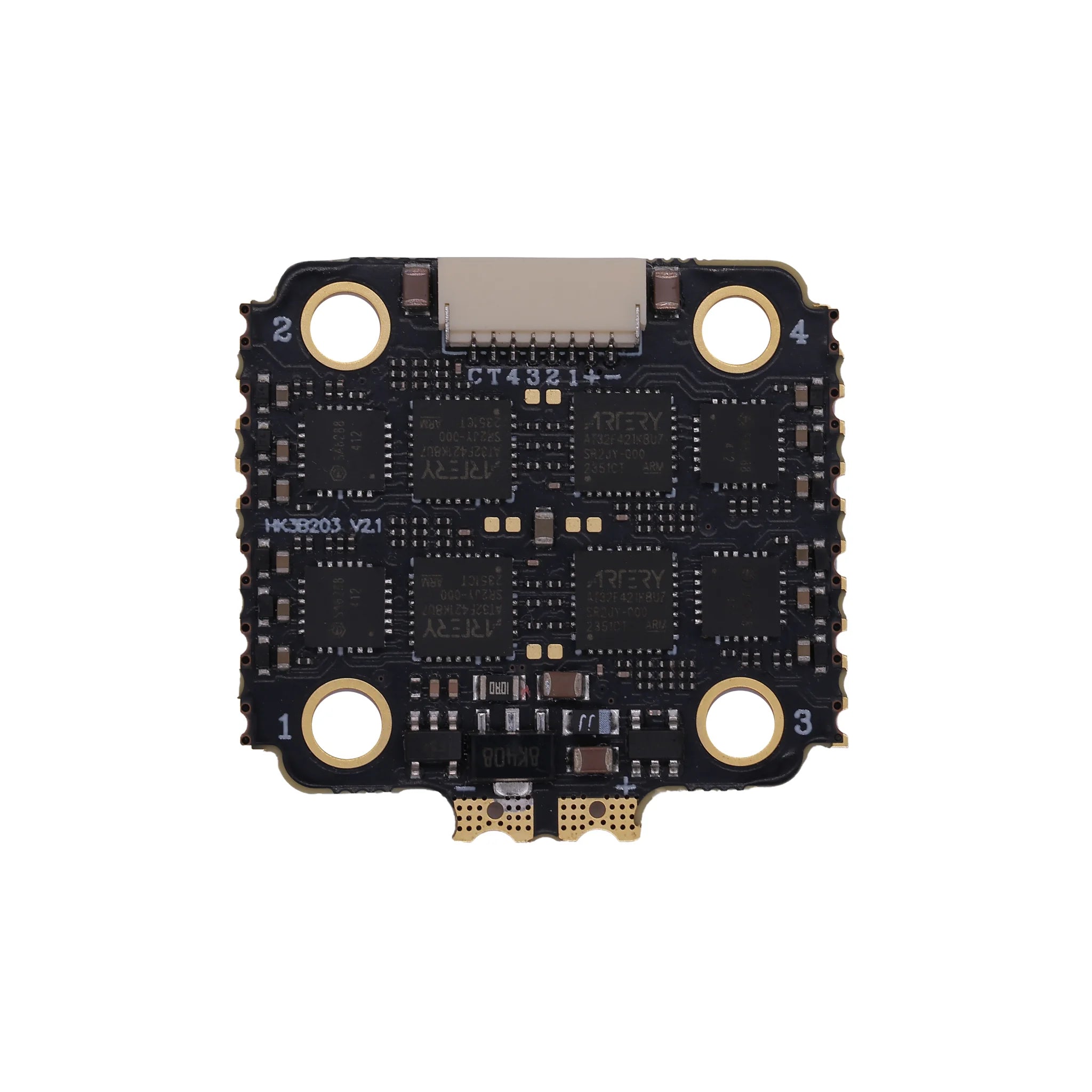Yo, what’s good, FPV fam? Today, I’m hyped to crack open the NZFPV Hakrc F7220 32 50A AIO, a beastly all-in-one flight controller that’s got my inner gearhead buzzing. As a freestyle pilot who’s built more quads than I can count, I’m always on the hunt for gear that can handle the abuse of 6S freestyle sessions while keeping things clean and simple. This F7220 AIO, with its 50A ESC, STM32F722 CPU, and stacked feature set, looks like it’s ready to rip. Let’s dive into the unboxing and see if it lives up to the hype!
Cracking Open the Box
The Hakrc F7220 arrives in a no-nonsense box—nothing flashy, just straight to the point, which I respect. Popping it open, the AIO itself is the star of the show. Compared to my old-school F4 boards (you know, those clunky dinosaurs), this thing is sleek and rectangular, with 20mm mounting holes that scream “5-inch freestyle rig” compatibility.

The 8-layer PCB with 2oz copper feels legit, like it’s built to handle some serious amps without breaking a sweat. You can tell Hakrc didn’t skimp on quality—those Japanese Murata capacitors and 40V 8010 MOSFETs are the kind of components that make you trust a board to survive a few inevitable crashes.
Digging into the Details
Let’s get up close with this bad boy. On the top side:
-
Power pads for 2S-6S LiPo hookups are beefy and well-placed, ready for some thick 12AWG wire.

-
Three ESC output ports for your motors, supporting all the protocols I care about—Dshot600, Dshot300, you name it. The 50A continuous (60A peak) 4-in-1 ESC running BLHeli_32 firmware is built for pushing big props and screaming motors.

-
The STM32F722RET6 CPU is the brains of the operation, and I’m already geeking out about the performance this chip can deliver with HAKRCF7220D firmware. Paired with the ICM42688 IMU, this thing should feel locked-in, whether I’m ripping barrel rolls or cruising cinematic lines.

-
Port 2 and Port 4 for receivers—Frsky, Flysky, TBS Crossfire, you’re all welcome here. No fussing with adapters or weird configs.

Flip it over, and there’s a dedicated LED serial port that’s basically begging for a DJI digital VTX hookup. Clean integration for digital FPV is a huge win for me—no messy wiring hacks needed. Oh, and that arrow indicator for orientation? Super clear, pointing to the nose of your quad. No second-guessing during the build.

What’s in the Goodie Bag?
Hakrc didn’t skimp on the accessories, which is clutch for us builders. Inside the box, you get:
-
A manual that’s actually useful—wiring diagrams, port configs, and even a breakdown for setting up DJI FPV goggles. No Google Translate nonsense here.

-
A 35V, 470µF solid-state capacitor to keep your power clean, especially on 6S setups.

-
6-pin and 4-pin cables for DJI VTX and LED strips. The 4-pin cable slots right into the LED port, making RGB bling a breeze.
-
A 12AWG power cable that’s thick enough to handle high-current builds without melting.
-
Damping mounts for the 20mm holes, because nobody wants their IMU picking up every vibration from a 5-inch prop.
The extra ports in the manual also mention support for GPS, analog cams, and VTX, so you’ve got options for days, whether you’re going analog or full digital.
Why I’m Stoked
As a freestyle pilot, here’s what’s got me itching to slap this into a build:
-
50A ESC with 6S support: This AIO can handle the gnarliest 5-inch or 6-inch props I throw at it, with 32-bit BLHeli_32 for buttery-smooth motor response.
-
F7 power with ICM42688: The STM32F722 and ICM42688 combo is a dream for precise, locked-in flights. I’m expecting this to feel like an extension of my brain in the air.
-
Dual BECs (5V/3A, 10V/2.5A): Powering my HD VTX, GPS, and RGB LEDs without a hitch? Yes, please. No more frying peripherals because of weak power delivery.
-
16MB black box and AT7456E OSD: Tuning geeks like me will love digging into flight logs, and the OSD means I can keep an eye on stats mid-flight.
-
Tank-like build: That 8-layer PCB, resin-plugged design, and premium components mean this thing’s ready for the crashes I’ll inevitably put it through.
First Vibes and Build Plans
Straight outta the box, the Hakrc F7220 50A AIO feels like a premium piece of kit. The compact design and clean layout are gonna make my next 5-inch freestyle build a breeze—no rat’s nest of wires here. The fact that it’s future-proof with F7 processing and wide protocol support means I won’t be swapping it out anytime soon. I’m already planning to pair this with some 2306 motors and a DJI O3 unit for a lightweight, high-power ripper.
I’ll be back with a full build guide and flight impressions once I get this thing in the air. Spoiler alert: I’m expecting it to shred. What do you guys think of this AIO? Got any Hakrc builds you’re running? Drop your thoughts in the comments, and let’s geek out over some FPV goodness!





